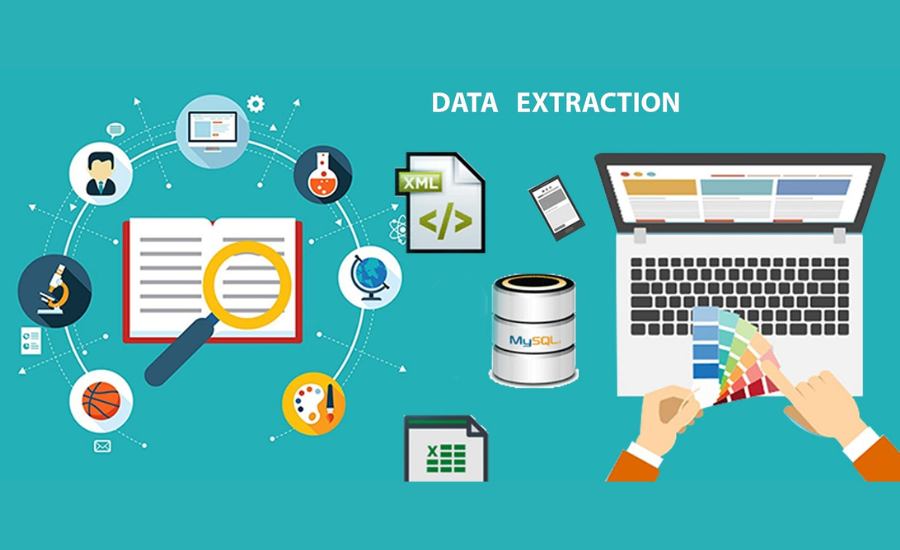In today’s digital age, the ability to efficiently gather, process, and analyze data is crucial for businesses and organizations. Data extraction, a pivotal component of data management, plays a significant role in this process. By understanding what data extraction is, the various techniques employed, and its applications, businesses can harness its potential to make informed decisions, streamline operations, and gain a competitive edge.
What is Data Extraction?
Data extraction involves the process of retrieving data from various sources and converting it into a usable format for further processing and analysis. This data can come from a myriad of sources, including websites, databases, documents, and more. The goal of data extraction is to gather relevant information without altering the original source, ensuring that the integrity of the data is maintained.
Techniques of Data Extraction
There are several methods and techniques used in data extraction, each suited to different types of data and sources. Here are some common techniques:
1. Manual Extraction:
This involves manually copying and pasting data from one source to another. While simple and straightforward, it is time-consuming and prone to errors, making it less suitable for large-scale data extraction.
2. Web Scraping:
This technique uses software or scripts to automatically extract data from websites. Web scraping tools can mimic human browsing to gather information from web pages, making it a powerful method for collecting data from the internet.
3. Database Extraction:
Involves querying databases to retrieve specific data. SQL (Structured Query Language) is commonly used for this purpose, allowing for precise extraction of data from relational databases.
4. Optical Character Recognition (OCR):
OCR technology converts different types of documents, such as scanned paper documents or PDFs, into editable and searchable data. This is particularly useful for extracting data from images or printed documents.
5. API Extraction:
Many modern applications provide APIs (Application Programming Interfaces) that allow for direct extraction of data. APIs are designed to enable different software applications to communicate with each other, making data extraction more efficient and reliable.
Applications of Data Extraction
Data extraction is utilized across various industries and for numerous purposes. Here are some notable applications:
1. Business Intelligence:
Extracting data from multiple sources helps businesses gain insights into market trends, customer behavior, and operational efficiency. This information is crucial for strategic planning and decision-making.
2. E-commerce:
E-commerce platforms use data extraction to gather product information, pricing, and customer reviews from competitors’ websites. This helps in price comparison, inventory management, and enhancing customer experience.
3. Healthcare:
In the healthcare industry, data extraction is used to collect patient records, medical histories, and research data. This information supports clinical decision-making, research, and improving patient care.
4. Financial Services:
Financial institutions extract data from various sources to monitor market conditions, manage risks, and ensure regulatory compliance. This enables better financial planning and investment strategies.
5. Research and Academia:
Researchers and academics extract data from online databases, journals, and other sources to support their studies and analyses. This facilitates the advancement of knowledge and innovation.
Challenges and Considerations
While data extraction offers numerous benefits, it also presents challenges. These include:
1. Data Quality:
Ensuring the accuracy and consistency of extracted data is crucial. Poor data quality can lead to erroneous conclusions and decisions.
2. Legal and Ethical Issues:
Data extraction, particularly web scraping, can raise legal and ethical concerns. It’s important to respect copyright laws, terms of service, and privacy regulations.
3. Scalability:
As the volume of data grows, the ability to efficiently extract and process large datasets becomes more challenging. Scalability is a key consideration for businesses dealing with big data.
4. Security:
Protecting sensitive data during extraction is paramount. Implementing robust security measures is essential to prevent data breaches and unauthorized access.
Conclusion
Data extraction is a fundamental process in the realm of data management, enabling businesses and organizations to unlock valuable insights from diverse sources. By leveraging the right techniques and addressing the associated challenges, companies can optimize their operations, drive innovation, and stay ahead in a competitive landscape. As technology continues to evolve, the methods and applications of data extraction will only expand, further highlighting its significance in the digital era.
Stay in touch for more updates and alerts visit: Gossips!



